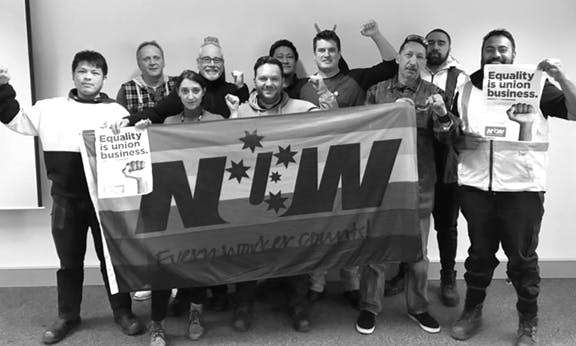Workers shut down money factory

Workers at Note Printing Australia shovel out more than $3 million in currency every hour, but they can’t get a decent pay rise. So on Friday 10 August, workers at the company’s Craigieburn factory, in the northern suburbs of Melbourne, walked off the job to support their wage claim of 3.5 percent per year.
If there’s one business in the country that definitely has the cash to pay for decent wage rises, it’s Note Printing Australia. In the year to June 2017, the workers pumped out 346 million Australian banknotes with a face value of more than $14 billion: a rate of more than $3.4 million every working hour, across day and afternoon shift. It’s the labour of these printers, technicians and white collar workers that enables the entire Australian economy to keep functioning, as well as producing banknotes for a lucrative export market.
Apart from the sheer volume of the cash they produce, there’s another reason that workers at Note Printing Australia might expect a 3.5 percent wage rise. This is the figure their boss has advocated for workers across the country. NPA is a wholly owned subsidiary of the Reserve Bank – whose governor, Philip Lowe, told a parliamentary committee in February this year: “We should probably have average wage increases over long periods of time at 3.5 per cent, if we can get decent productivity growth”.
The productivity growth is certainly there at NPA: production surged in the most recent figures available, as the Reserve Bank rolled out the new $10 note. And the Reserve Bank governor obviously knows first hand about the benefits of a hefty pay cheque – his own salary package recently nudged past $1 million annually. However, he’s only offering 2.5 percent to the workers who keep this key part of his business humming – along with the entire economy. This is barely in front of the current inflation rate of 2.1 percent.
The workers are also pushing for domestic violence leave and for a casual conversion clause: some labour hire agency workers have worked at the facility as a casual for up to eight years, with no access to permanent status.
Workers walked off the job for 24 hours in May and since then have had bans on overtime and certain software. Mick Bull, the site organiser for the Australian Manufacturing Workers Union, estimates that production has been cut by up to 20 percent.
In response to a new ban, which would have stopped the printing presses for an hour on Friday, management announced they were locking out half the workforce. The rest of the workforce, covered by the Finance Sector Union and the Electrical Trades Union as well as the AMWU, walked out on strike in solidarity. For only the second time in the century-long history of banknote production in Australia, workers had shut down the money factory.
Management are playing hardball. But a legal consequence of the management lockout is that the workers are free to take industrial action at any time, without giving notice to the employer. So the dispute could take any course from here. But one lesson is clear: despite the kind words of their boss about the need for a pay rise, the workers who literally produce the cash won’t get their hands on a better share of it without a serious fight.